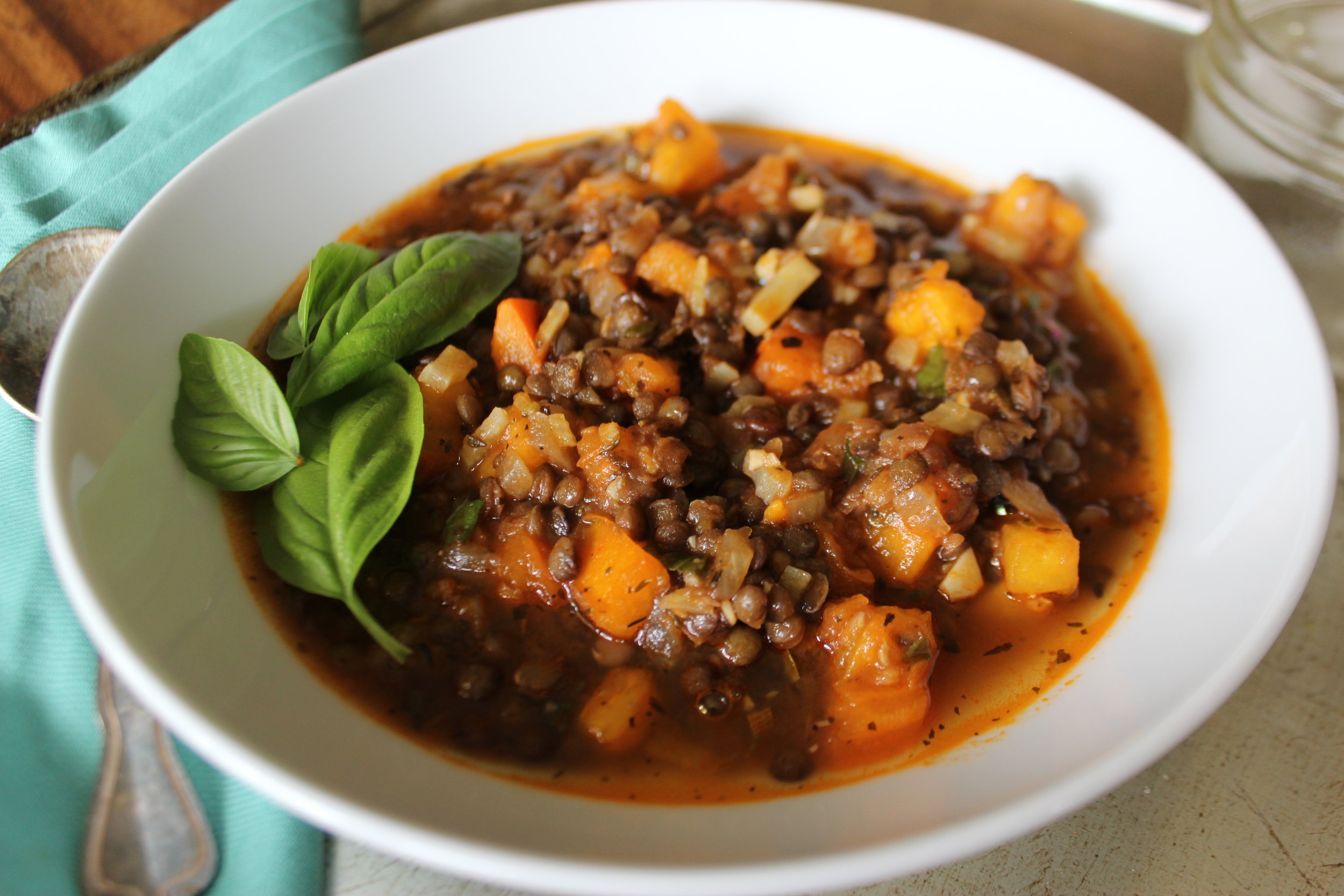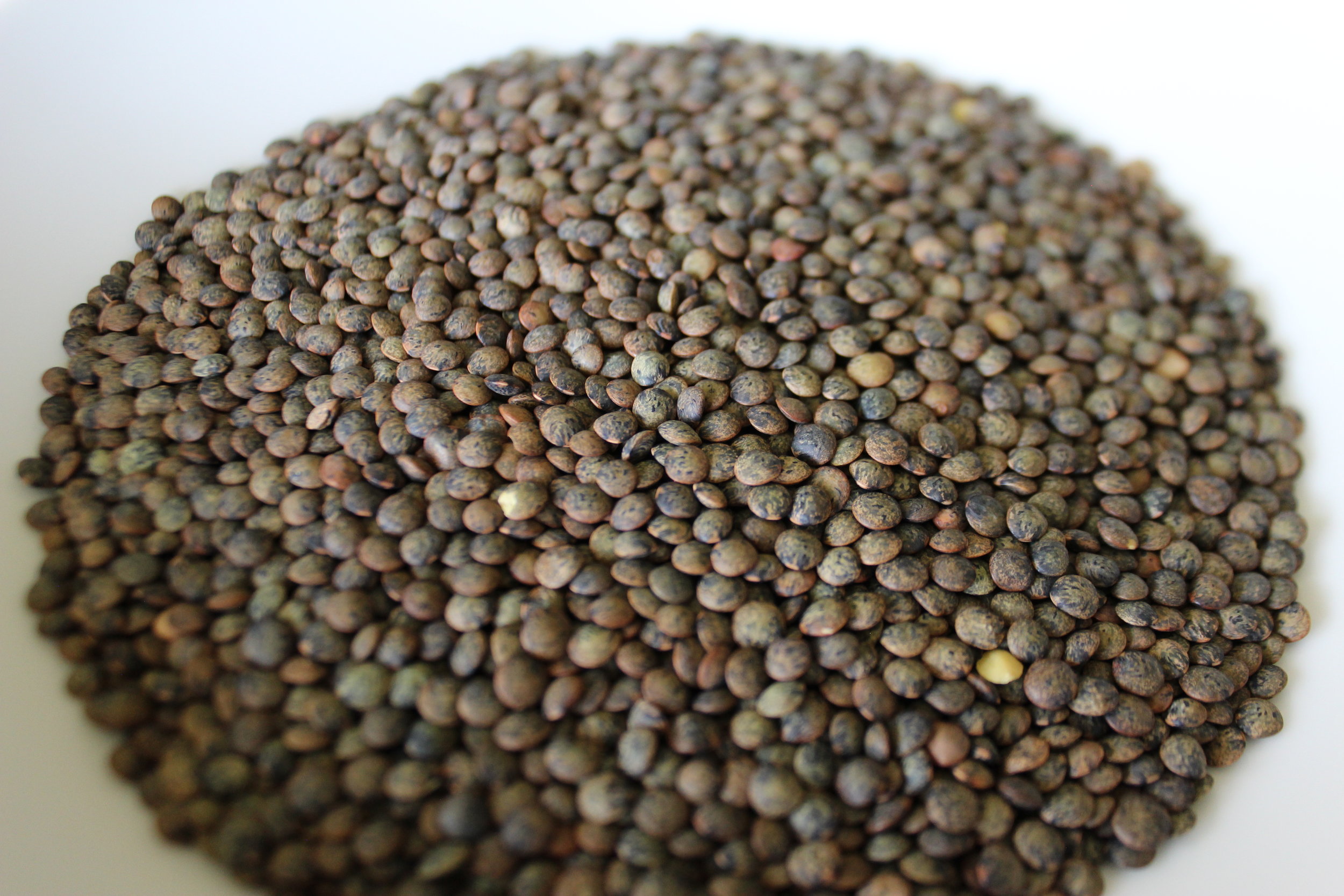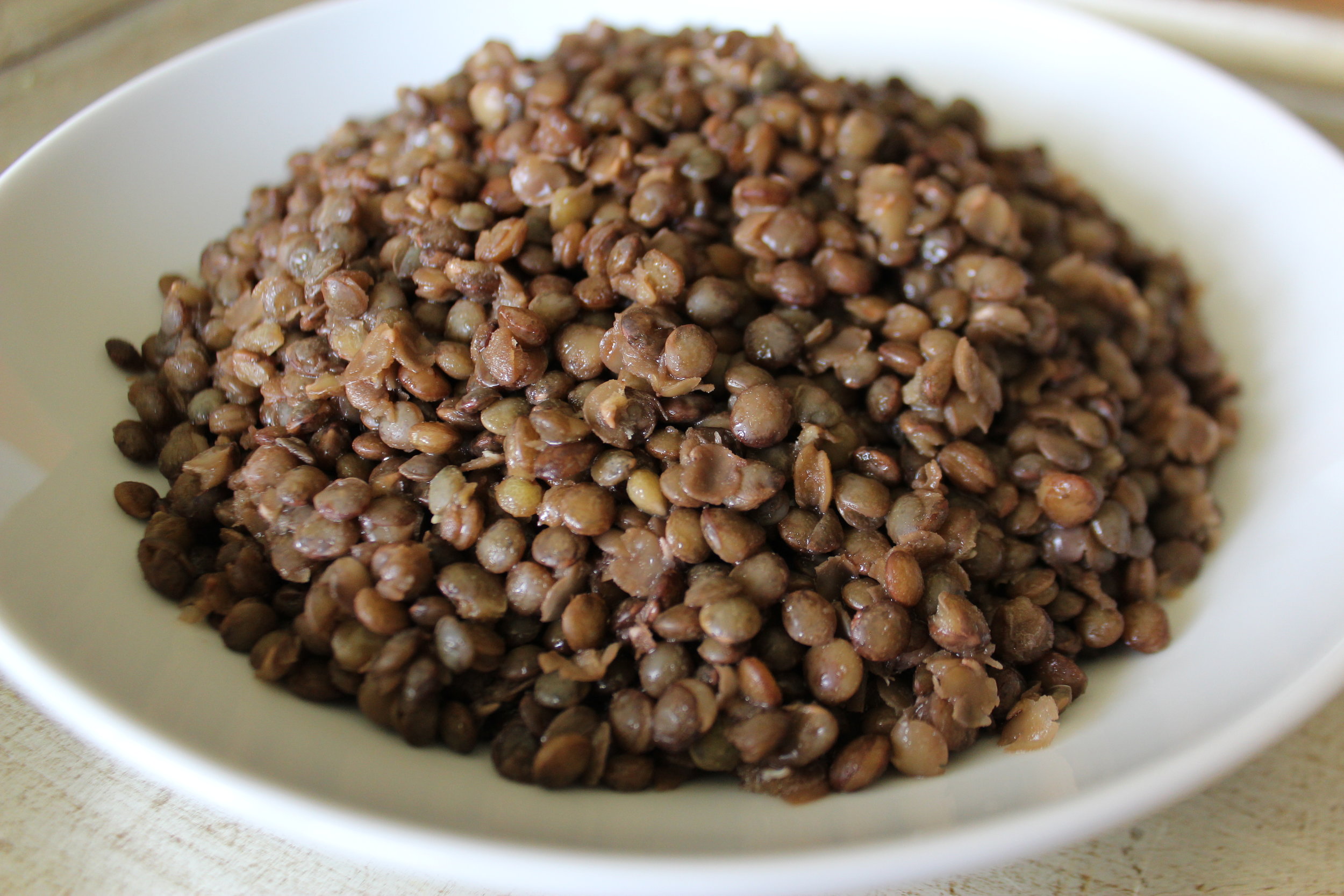Heirloom Tomato Lentil Soup with Fennel and Fresh Basil
I would like to introduce you to a delicious and versatile little lentil. The Puy lentil! Firm, fast cooking, and fit for soups, stews, and salads alike, Puy lentils are a must in the pantry. Oh, some of you have already met? Then hopefully this will inspire you to put this recipe, or your own version, into your rotation during this end of summer/beginning of autumn season.
About the produce: I got my hands on some beautiful orange heirloom tomatoes at the Dallas Farmers Market. Meaty and sweet with tender skins, perfect for big chunks in soup. My basil seems to reach its peak in August and September...reaching into October last year as well. So, it's got to be used! Now, speaking of fennel, it is the "secret ingredient" in this soup and many of my recipes because it adds a wonderful, often mysterious undertone to soups, sauces and stews. For folks not accustomed to eating or cooking with this sturdy, crisp, and slightly anise flavored vegetable, don't let that last part throw you. The anise flavored part. You will be familiar with it from sausages containing fennel seeds and shaved salads, you just may not know it! So, let's get crackin'.
Puy, or French lentils as they are also called, are a beautiful green-brown sometimes with a slightly pinkish blush. They have a mottled pattern and are quite small. The beauty of these lentils is their integrity. They hold together like no other. That makes them a perfect choice for lentil salads in which you can mix them with grains, pasta, or vegetables and they wont disintegrate to mush. If you would like a softer lentil in this soup, feel free to switch to a green or brown lentil instead. You can also cook the Puy lentils longer if you like. You are in command of your pot!
I can't encourage you enough to make your own stock on a regular basis. Here is how I make it painless. I keep a couple of zip lock bags in the door of my freezer. Anytime I have worthy scraps, I toss them into the bag after prepping veggies. I have two bags so that I can make stock with different flavor profiles. One would be include grated shreds of ginger, ends of lemon grass, maybe shiitake among the usual veggie bits. The other may have the additional rind of hard cheeses like parmigiano reggiano, pecorino, grana padano etc. along with the usual veggie scraps.
When you have a lazy Sunday, pop a pot on in the morning, simmer those veggies an hour or so with the possible addition of bay leaf, peppercorns, extra garlic, fresh herbs like thyme, rosemary or parsley or firm sea vegetables like kombu. Don't forget corn cobs during corn season! You just want to avoid members cruciferous vegetables because they can impart a bitter flavor to stock. Freeze the stock in freezer bags or pint and quart containers, label them and have flavor on hand for all recipes that call for liquid additions. Easy.
Now, on building a soup, because that's what you do, you BUILD a soup from the ground up. Cooked soups whether served hot or cold, almost always need to be built in a certain way. Raw soups are a different animal altogether. You start with the flavor base which consists of vegetables of many sorts. This has many names, mirepoix, soffrito, saute or a sear of veggies to get a caramelized flavor. Vegetables, flavorful roots and bulbs, spices and dried herbs and often pastes are cooked in a specific order to create a flavor base that is well infused into the fat used in the recipe. This makes all the difference. If you are putting together a stew, a long braise, or a soup, you will want to pay attention to layered construction of flavors. Dried herbs and spices belong in the foundation stage, fresh herbs and fresh seasonings like basil or lemon zest and juice, are best added at the end of cooking. You will find exceptions, but theses are good rules to follow.
Perfection isn't the name of the game when prepping soups and stews. Just consistency and consideration of the qualities of the foods you are using. Fennel, onion and garlic go into the initial saute so I made sure the fennel, which is hard more like a carrot, is diced a little smaller to speed up its softening. If you want big chunks of fennel be my guest! Just give it extra time. Hefty, firm, tender-skinned tomatoes chopped in big chunks won't break up in the soup as quickly and the tender skins wont come off in leathery little bits. If it's the heart of winter and you *forgot* to put up all those tomatoes from your garden, substitute your favorite grocery canned tomato instead and add them when you add the lentils.
I am pretty sure I was watching Lydia Bastianich whip up something delicious on television years ago and when I learned the technique of frying the tomato paste. If it works for Lydia, it works for me.
I almost didn't want to mix this together it was so pretty. That final punch of basil and balsamic vinegar for acid make the soup complete.
Heirloom Tomato Lentil Soup with Fennel and Fresh Basil
Ingredients:
- I C dry Puy (French) lentils
- 3 C heirloom tomato, large dice
- 1 C fennel, small dice
- 1 C onion, small dice
- 5 medium garlic cloves, minced
- 1/4 C extra virgin olive oil
- 3 Tbsp tomato paste
- 2 Tsp dried thyme
- 2 Tsp dried basil
- 1 Tsp dried oregano
- 2 C vegetable stock or water
- 2 1/2 Tsp sea salt
- 1 Tbsp balsamic vinegar
- 20 large leaves fresh basil, roughly chopped
Begin by sorting through the lentils to remove any wayward stones or debris. In a small pot, rinse the lentils several times and cover them in 3 to 4 inches of water. Bring the lentils to a low boil and cook for 30-35 minutes or until just tender but not falling apart. You may want to cook them with the lid on but slightly uncovered to reduce evaporation and the chance that you might have to add a little more water to the pot. Monitor the water level in case you need to add more during cooking.
When the lentils are done, drain them, reserving the cooking liquid if you are not using stock or if you would like to substitute cooking liquid for part of the stock. Set the lentils aside.
Chop the tomatoes to a large dice and set aside. Chop one cup of the fennel and onion to small dice as well. I made my fennel even smaller than the onion as it is a little harder and will take slightly longer to soften. Mince 5 medium sized garlic cloves. Use a heavy bottomed pot no smaller than 3 quarts to begin sauteeing the fennel, onion and garlic with the olive oil over medium to medium high heat. Stir regularly until the onions are just translucent and the fennel has softened. There should be no browning.
Push the saute to the side of the pan and add the tomato paste to the other side, frying it in the oil for about two minutes. You can turn the heat up slightly to get the paste to fry. It may stick slightly to the bottom of the pan and that's good. It's caramelizing slightly and infusing the oil. Next add the dried herbs and mix this soup base completely together for about two minutes.
Now add the stock or combination of stock/water/cooking liquid, the cooked lentils, and the salt. Bring the soup up to a simmer for 5 minutes. Finish the soup by removing the pot from the heat, adding the chopped tomato, fresh basil and balsamic vinegar. The tomato will just soften in the hot soup. Enjoy!
Yield: 6 cups/ 6 servings
Keep the soup in the fridge up to 7 days.







